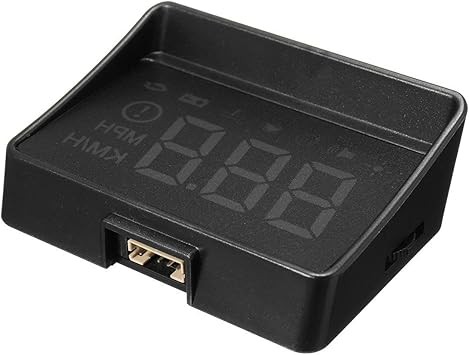Improving driving safety and convenience is a constant goal for vehicle owners. One innovative solution gaining popularity is the Obd2 Head Up Display (HUD). This device projects crucial driving information directly onto your windshield, right in your line of sight. For drivers struggling to easily view their speedometer or wanting to minimize distractions, an OBD2 HUD can be a game-changer. This article explores the benefits of using an OBD2 HUD and how it can enhance your overall driving experience.
Installing an OBD2 HUD is generally straightforward, often involving a simple plug-and-play setup into your vehicle’s OBD2 port. As demonstrated by a user who improved their speedometer visibility, the installation can be discreet and non-intrusive. The data cable is easily routed to minimize clutter and potential hazards, ensuring a clean and functional setup. Typically, the cable can be tucked away along the dashboard and A-pillar trim, keeping it out of sight and preventing any interference with driving.
Once installed, calibration might be necessary to ensure accurate readings, especially for speed. This usually involves minor adjustments to the HUD’s settings to align with your vehicle’s actual speed. Even slight adjustments can result in highly accurate speed displays, minimizing any discrepancy between the HUD and your car’s speedometer.
The advantages of using an OBD2 head up display extend beyond just speedometer visibility. These devices can display a range of real-time vehicle data, such as speed, engine temperature, battery voltage, and more, depending on the model. By keeping essential information within the driver’s line of sight, HUDs minimize the need to look down at the instrument cluster, promoting safer driving by reducing distractions. This constant access to data can also provide drivers with a better understanding of their vehicle’s performance and condition.
While OBD2 HUDs offer numerous benefits, some users might have concerns about their long-term impact on the vehicle’s electronics when constantly plugged into the OBD2 port. Questions about potential electrical stress or battery drain are valid. However, most modern OBD2 HUDs are designed to be energy-efficient, with low power consumption, often drawing less than 150 milliamperes even at full brightness. This minimal draw suggests that the risk of significant stress on the vehicle’s electrical system is low, making them suitable for continuous use.
 SHEROX 3.5" Car HUD Head Up Display product image from Amazon, highlighting its compact design and features.
SHEROX 3.5" Car HUD Head Up Display product image from Amazon, highlighting its compact design and features.
In conclusion, OBD2 head up displays offer a practical and effective way to enhance driving safety and convenience. Their easy installation, customizable displays, and minimal power consumption make them a valuable addition for drivers seeking improved visibility and access to real-time vehicle information without taking their eyes off the road.